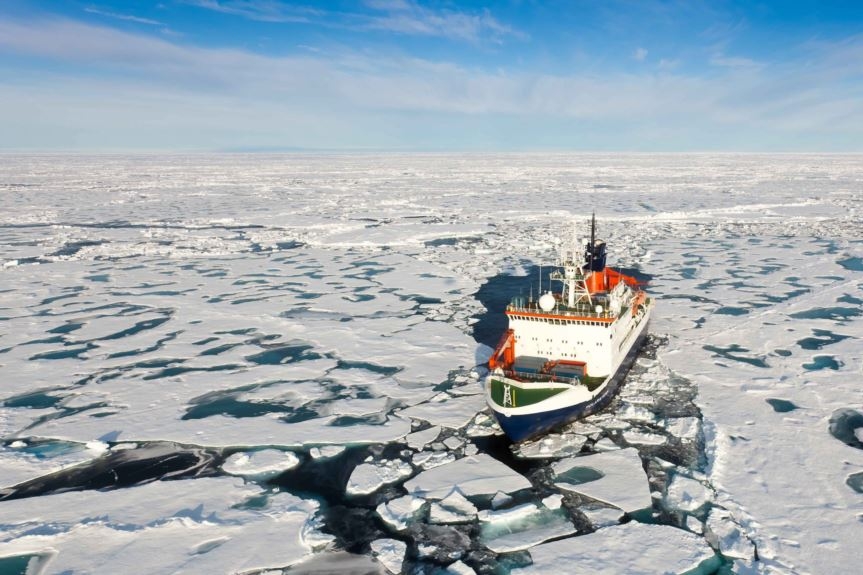News review of the events on the NSR
#2 November 2019
1. Traffic volume along the Northern Sea Route can reach 30 million tons in 2019
The State Atomic Energy Corporation “Rosatom” announced in November that the cargo transportation plan along the Northern Sea Route for 2019 was completed ahead of schedule. It amounted to 26 million tons. After that, Deputy Prime Minister Maxim Akimov said that most likely the traffic volume would be 30 million tons in 2019. This is 10 million tons more than in 2018.
As for the long-term prospects, according to the forecast of the Ministry of Natural Resources and Environment of the Russian Federation the traffic volume since 2034 may reach 157 million tons. To achieve this figure, it is necessary to attract 10.5 trillion rubles from extrabudgetary sources over the next 10 years, in order to finance 118 projects.
2. Many cargo ships to work on the Northern Sea Route
In order to work in the eastern and western directions of the Northern Sea Route (NSR) the construction of cargo ships is necessary in the conditions of growing cargo flow.
This is opinion of the director of GEKON LLC (St. Petersburg) Mikhail Grigoryev expressed on the basis of the analysis.
It showed that now the fleet serving in the western and eastern directions for the transportation of minerals has 50 vessels, however, with the predicted growing cargo flow, the construction of another 42 vessels will be required. Thus, the fleet should increase by 84%.
In such a situation, the NSR operator, Rosatom, should additionally assess the need for icebreaking support for transportation of mineral raw materials for projects in the Ob Bay and the Yenisey Bay.
3. Russia has development plan for the Northern Sea Route
Rosatom and Ministry for the Development of the Russian Far East have completed the development plan for the Northern Sea Route until 2035. The document was submitted to the government of the Russian Federation for review and adoption.
Sources say that in the revised plan includes all the proposals of the Ministry. Earlier, Russian Deputy Prime Minister Yuri Trutnev, following a meeting of the State Commission for the Arctic Development, recommended Rosatom pay more attention to the construction of infrastructure for the NSR, and not just the issues of building and operating icebreakers.
4. Russian government is going to allow private investors to offshore projects
Ministry of the Development of the Russian Far East is preparing a bill regulating the possibility and conditions for the admission of private investors to implement projects on the Arctic and Far Eastern continental shelves.
To this end, it is planned to create a state corporation that will consider applications from companies, draw up maps of sections of the unallocated fund on the shelf, approve a technical project for developing deposits with the Ministry of Natural Resources and the Ministry of Energy, conduct auctions, etc.
Investors will have to prove the presence of at least 30% of the funds needed for the exploration and development of the site, and provide the organization at least 25.1% of the irreducible share in the projects. This percentage will depend on the production volumes of the developed areas.
In addition, the investor will be obliged to conduct at it’s own expense exploration at the site: at a minimum it is 2D seismic exploration, drilling one exploratory well. Despite the share in the projects, the state corporation will not pay for this work, as well as for the construction of infrastructure. It will reimburse its part of exploration expenses only on condition that the commercial stocks of the project are confirmed, and already from the proceeds from the sale of oil and gas produced.
If the company has not conducted exploration for more than three years from the date of obtaining the license, the cost of outstanding work is withdrawn from the guarantee funds provided by it before the auction.
5. Start of sea trials of the new Russian nuclear icebreaker
It is planning to send the lead nuclear icebreaker of project 22220 ”Arktika” to sea trials on December 12, said Alexei Kadilov, general director of the Baltic Shipyard in St. Petersburg. The company placed orders for the construction of three universal nuclear-powered icebreakers of project 22220 – Arktika, Siberia and Ural. The customer is Atomflot.
All three vessels, including “Arktika”, should be put into operation before 2022. The commissioning of the fourth serial icebreaker is scheduled for 2024, the fifth one – in 2027, but their construction has not yet begun.
The length of the icebreaker of project 22220 is 173.3 meters, width – 34 meters, DWT – 33.5 thousand tons. These icebreakers will be able to support ship caravans in arctic conditions, breaking ice up to three meters thick. They will ensure the passage of vessels with hydrocarbon raw materials from the fields of the Yamal Peninsula and the Gydan Peninsula and from the Kara Sea shelf to the markets of the countries of the Asia-Pacific region.

